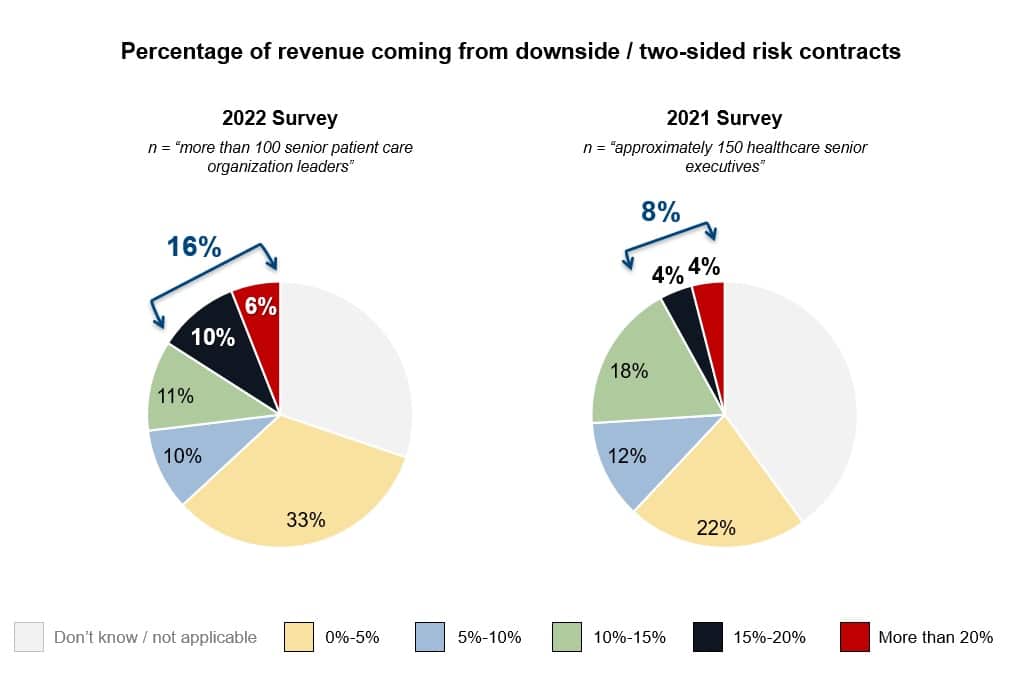The Advantages of Providers Considering Risk-Based Contracts

According to the “2022 State of the Industry Survey” from Healthcare Innovation, “the COVID-19 pandemic has jumbled a lot of predictions that industry analysts had been making regarding the advancement of value-based and especially risk-based contracting.” Although the article cites “mixed news on the value-based delivery and payment front,” it is worth noting that overall, more respondents “are participating in some sort of value-based program” than last year. Additionally, the percentage of respondents who indicated that more than 15% of their organization’s revenue comes from downside risk contracts was roughly double the percentage from last year’s survey (16% in 2022 vs. 8% in 2021). See chart below (created by Impact Advisors based on data cited in the article).

Why It Matters:
We think these excellent comments in the article from Impact Advisors’ very own John Klare sum things up perfectly on the risk-based contracting front. Per John: “That data [from the survey] suggests that the relative amount of risk that providers are taking on is increasing; that makes sense to me. A broader construct that’s interesting is that my gut sense tells me that there are advantages and disadvantages in taking on partial risk. The advantage is you reduce the downside risk exposure, but the disadvantage is that it’s hard to hold onto the benefits… so I think that providers should consider full-risk contracts. I think if they keep taking partial risk, over time, you can’t win that game with payers. Whereas if you take full risk and keep the contracts aligned and are able to perform well, you can gain the advantage. There are benefits in taking full risk in certain markets.”
This article was originally published in Impact Advisors’ digital newsletter: The Impact Advisor 1Q2022.
























